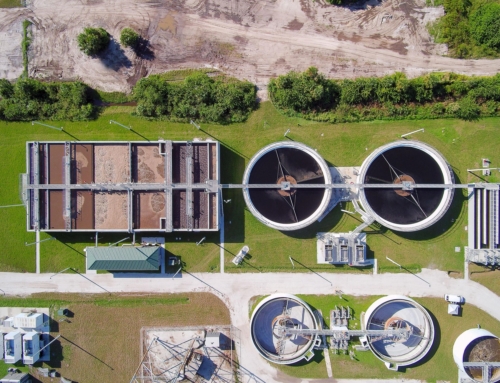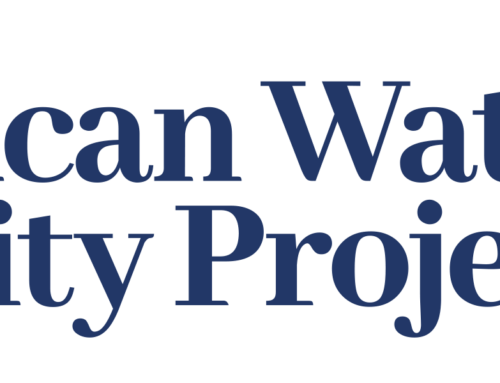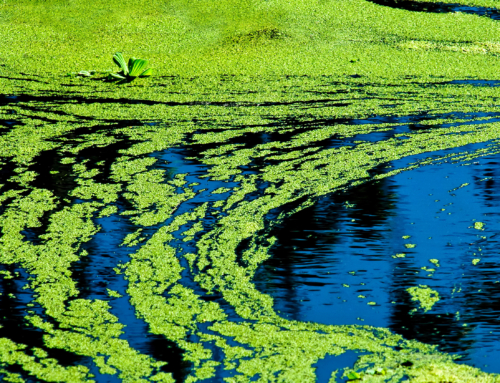AWSP Announces 2019 Florida Legislative Agenda
Dr. Brandon D. Shuler
Executive Director
American Water Security Project
5315 1st Avenue South
Saint Petersburg, Florida 33707
March 25, 2019
Dear Governor DeSantis and Florida legislators:
The American Water Security Project appreciates the Governor’s and the legislature‘s recognition that Florida’s economic health depends upon clean water, key environmental restoration projects, and reducing land-based sources of pollution at their sources.1 We write to introduce our organization, to deliver our legislative priorities, and to provide science-based suggestions about how the state’s waters will benefit most from appropriations.
Though the American Water Security Project is a new organization, each of our board members, the members of our advisory panels, and our staff have decades of experience across one or more disciplines related to water quality, including: aquatic chemistry, coastal geology, ecosystem science and management, fisheries management, water treatment technology, water law, and legislative and social advocacy.
Our recommendations come from our extensive experience, and we offer our expertise to any government entity working toward clean water as a common goal. You can learn more about us, about the policy issues, and about the science at www.awsproject.org.
We are strongly encouraged by Governor DeSantis’s request for roughly $650 million in funding to repair Florida’s waters. Meanwhile, the American Water Security Project is working to create, increase, and better align funding opportunities for water infrastructure improvements and ecological restoration on the federal, state, and local levels.
The week of March 10, legislators in the Capitol met with several of our experts, as well as voting-age college students from around the state, to discuss our legislative priorities. Thank you for your time and attentiveness.
Our Florida legislative priorities for 2019 include:
- Appropriating funds for Comprehensive Everglades Restoration Projects (CERP)
- Appropriations and accountability measures regarding wastewater infrastructure improvements
Everglades Restoration
Everglades Restoration (CERP) projects will improve the quality, the timing, and the quantity of water delivered to the Everglades and downstream ecosystems. Those water bodies include the lower Indian River Lagoon system, the entire Caloosahatchee River, and the waters within Everglades National Park, Biscayne National Park, and Florida Bay, at large. Beleaguered Everglades waters historically produced astounding fisheries that made Florida the Fishing Capital of the World,2 providing the state with a powerful economic engine that drives tens of billions in tourism revenues, billions in the boating and tackle industries,3 as well as billions in seafood sales.4 We also rely upon the Everglades watershed to meet the water needs of thousands of businesses and nearly eight million people.
There is widespread agreement amongst scientists and diverse stakeholders that millions of Floridians and visitors will benefit from appropriations that adequately fund the completion of authorized Comprehensive Everglades Restoration Projects, such as the reservoirs that will benefit the northern estuaries, the southern reservoir, and the elevation of the Tamiami Trail, among others. We hope that you will appropriate $350 million this year to CERP projects, and continue to fund CERP projects at levels that accelerate their construction.
Wastewater Infrastructure: Background
Florida’s widespread wastewater pollution problems have not received the same attention as Everglades issues, which are not entirely separate issues, since human wastewater is a significant nutrient-loading source to naturally oligotrophic (nutrient-poor) Everglades ecosystems, including coral reefs, and other surface water bodies around the state.5
We would like to take this opportunity to provide examples of wastewater pollution problems statewide. We would also like to explain why the Florida legislature should prioritize recurring funding for wastewater infrastructure improvements, and mandate significant upgrades to wastewater infrastructure.
The Environmental Protection Agency (EPA) defines domestic wastewater as water that has constituents of human and/or animal metabolic wastes, or water that has residuals from cooking, cleaning and/or bathing.6
In Florida, wastewater is generally treated in one of two ways:
- Domestic wastewater treatment facilities receive wastewater from urban sewer collection systems, where wastewater is treated to varying levels. In terms of preventing nutrient pollution and allowing utilities to recycle precious water, utilities rely on the biological processing of organic matter and bio-oxidation processes to remove excessive phosphate, nitrate, and ammonia concentrations to appropriate levels for recycling purposes. Disinfectants kill disease-causing pathogens. Advanced (tertiary/quaternary) treatment systems can further reduce nutrient concentrations and may remove pharmaceutical chemicals and other contaminants so that the water can be safely recycled for irrigation purposes, rehydrating ecosystems, and drinking water.
- Onsite Sewage Disposal Systems (OSDS), including larger package plants that rely upon partial onsite treatment and where biological processes in adjacent drainfields may transform nutrients to less bioavailable forms as wastewater percolates through soils.7
Sewage Feeds Harmful Algal Blooms
Harmful algal blooms (HABs), including cyanobacteria, red tide (Karenia brevis), brown tide (Aureoumbra sp.) and macroalgae (seaweed) blooms plague Florida waters. Studies have documented that HABs are becoming more frequent, in some cases more toxic, and longer lasting, due to nutrient pollution from human activities, including sewage pollution.8
While those species of algae may bloom naturally, all of them have been demonstrated to bloom in response to land-based sources of pollution, particularly on raw and partially treated human sewage, which is essentially a “superfood” for them.9 Compared to synthetic fertilizers and decomposing organic matter, human wastewater provides the most nitrogen and phosphorus rich and most biologically available sources of nutrients to harmful algae, allowing them to bloom intensely and for as long as adequate nutrition is available. Therefore, the best way to prevent and reduce the duration of harmful algal blooms is to choke off the sources of nutrients that feed them. In most affected areas, removing human wastewater loading may dramatically reduce nutrient pollution in measurable ways.
Sewage Sickens People and Wildlife
Florida recognizes that fecal bacteria from sewage and other animal sources pose significant threats to human health and tourism. The Florida Healthy Beaches Program provides for routine water testing in 30 coastal counties.10 Because fecal bacteria can cause a variety of serious infections, officials post warnings when and where bacteria levels get too high. But, the health issues resulting from sewage, pollution and resulting HABs are more widespread and dangerous than previously understood:
- Exposure to cyanobacteria blooms, which thrive off sewage, release neurotoxins that affect foodwebs and may cause human health effects, including ALS and Alzheimer’s11
- Exposure to red tide brevetoxins results in respiratory, eye and skin health impacts to humans. Florida’s red tide of 2017-18 killed over 150 dolphins, hundreds of manatees and sea turtles, and several tons of fish12
- Sea turtles in the Indian River Lagoon feed on sewage-fed algae containing proteins that awaken a dormant tumor-causing herpes virus13
- Researchers from the University of South Florida found an antibiotic-resistant MRSA-like bacteria, Enterococcus faecium, in Tampa Bay. The source was likely sewage spills by St. Petersburg utilities.14
Florida’s waterways and beaches drive the tourism that protects Floridians from paying state income taxes. Residents and visitors alike shy away from contaminated waters, which threatens our health as well as our local and statewide economies.
Florida’s Ailing Wastewater Infrastructure
Many of Florida’s water treatment plants and sewer lines were constructed shortly after the Clean Water Act (CWA) passed in 1972. By and large, they have not been maintained adequately, much less upgraded. Some plants lack adequate treatment capacity for existing customers, and cannot begin to accommodate the population growth Florida expects in the coming decades. Many are poorly maintained and are in various states of disrepair, and in too few places do they employ Advanced Wastewater Treatment (AWT) technologies that would allow the utilities to safely recycle and reuse the water for a variety of growing human and ecological needs.15
It’s essential that we recognize how untreated or inadequately treated wastewater pollutes Florida’s priceless waters, while demands for water needed for irrigation, drinking, and rehydration of ecosystems are rapidly increasing. We must expand and improve upon our wastewater treatment facilities.
Onsite Sewage Disposal Systems (Septic)
Unfortunately, Florida continues to permit high-density urban and suburban development utilizing Onsite Sewage Disposal Systems (OSDS) for domestic wastewater treatment, despite ample scientific evidence that indicates OSDS cannot adequately treat concentrated nutrient loads and dangerous pathogens before polluting groundwaters and adjacent surface habitats, including estuaries, springs and reefs.16
Septic systems only provide primary wastewater treatment, but cannot adequately reduce nutrients or destroy pathogens. Unfortunately, much of Florida’s surficial geological structure is sandy soil with low-organic material over shallow water tables, particularly in the wet season, which make treatment of wastewater by septic systems at any significant density extremely problematic.17
Meanwhile, many of Florida’s wastewater treatment facilities presently cannot process existing volumes of domestic wastewater, much less additional volumes from large-scale septic-to-sewer conversions. To be clear, we are not making excuses for local government failures to upgrade wastewater treatment systems, or their continuing to permit septic systems where they shouldn’t be utilized, which ultimately threatens the environmental and public health. But upgrades in treatment capacity and advanced treatment levels generally, but not always, must come first, followed by large-scale septic-to-sewer retrofits, including extensions of sewer mains into developing areas, where feasible.18
The costs of sewage infrastructure upgrades including septic-to-sewer conversions are significant but minor compared to the costs of inaction, which are already felt in terms of tourism losses, declining property values, and threats to real estate development.19 In addition the widely reported sewage-fueled HABs and fishkills along the coasts that deter outdoor recreation, Florida’s historically important springs fail to attract visitors partly because of our over-reliance on septic systems in springsheds where once gin-clear springs are now covered with excess biomass of fresh water algae.20
According to a recent report commissioned by Miami-Dade County, as sea-level rise raises the water table in coastal areas such as Miami-Dade County, increasing numbers of septic systems flood and fail.21 More than 100,000 Miami-Dade parcels depend upon septic tanks, more than 1,000 septic systems are likely failing, and 56 percent are likely compromised periodically during storms and/or extremely high tides. By 2040, experts predict that most of Miami/Dade septic systems will be routinely compromised. As a consequence, local waters will suffer increasing loads and concentrations of ammonia and nitrate, and become increasingly contaminated with viral, bacterial, and protozoan pathogens.
There is widespread recognition that the use of OSDS in high-density residential developments is incompatible with sustainable water quality and aquatic habitat around the state of Florida.
Local Governments need state support
In many cases, local governments have ignored wastewater infrastructure and pollution issues by blaming other pollution sources or directing funds toward pet business development projects, parks, and other recreational amenities.22
For example, St. Petersburg actually closed one of its four wastewater treatment plants to build an aquaculture facility on that site, and did little to repair its leaking sewer lines until a court order required them to do so. While millions of gallons of raw sewage ran into Tampa Bay, citizens groups successfully sued the city, forcing a necessarily rigid consent decree overseen by the EPA.
Only following consent decrees and legislation by the State of Florida in 2008 did Miami-Dade, Broward, and Palm Beach counties take steps to stop partially treated sewage dumping directly onto coral reefs via sewage outfalls.23 Legislation followed documentation that these sewage outfall discharges caused HABs that smothered coral reefs on the northern portion of the Florida Coral Reef Tract.24, 25
Meanwhile, following Hurricane Irma, Brevard County utilities discharged over 20-million gallons of raw and partially treated effluent directly into the Indian River Lagoon in a portion of the estuary with very little tidal circulation or flushing.26 Alternatively, the County government has avoided critical and expensive wastewater infrastructure upgrades that will most benefit the lagoon, but has chosen to fund muck dredging as a primary restoration strategy to mitigate the Lagoon’s collapse.27
However, the costs of wastewater infrastructure improvements are significant and state funding would encourage those investments. In some cases, especially with small, rural communities, financial assistance is critically needed to convert septic systems to municipal collection systems and/or construct plants that adequately treat present and future wastewater volumes.
For example, the City of Okeechobee constructed a wastewater treatment plant that has a net deficit of 2-million gallons per day to support the urban service area. Meanwhile, along the northern watershed of Lake Okeechobee, residential developments in Okeechobee County are serviced with greater than 80% OSDS and may be a significant pollutant source to the lake.
Appropriations Request
Because wastewater pollution is a ubiquitous and significant source of nutrient pollution in Florida waters, inadequately treated sewage has already contributed to significant coastal habitat loss, fish and wildlife dieoffs. Because wastewater pollution has had severe impacts on human health as well as Florida’s economy, we ask that you appropriate at least $150 million in recurring annual funding toward wastewater infrastructure improvements.
That funding should include requirements that the money can only be spent specifically, and in a logical sequence, on wastewater infrastructure upgrades, constructions, and conversions. Though each wastewater problem is different and may require a modified approach, in general, Florida must make significant investments in wastewater infrastructure improvements, typically beginning with wastewater treatment capacity/treatment upgrades, followed by collection system repairs, followed by septic-to-sewer conversions.
Again, because of past and potential misuses of tax and utility dollars that should have gone toward wastewater infrastructure improvements, we urge Florida’s legislature to appropriate a significant level of funding toward these problems in ways that require local governments to use such assistance only for such improvements. Finally, we urge the legislature to impose consequences on utilities for raw sewage spills.
Thank you for serving and ensuring a great future for the people of the State of Florida as you work to clean Florida’s waters and restore its unique ecosystems.
Sincerely,
Dr. Brandon Shuler
Executive Director
Dr. Peter Barile
Science Director
Terry Gibson
Government Affairs Director
1 The American Water Security Project is a registered 501c3. Our mission is, through education and advocacy, to be the leader in promoting the need for sewage and wastewater infrastructure upgrades and repairs, ethical treatment and pretreatment of used water and human waste, and the protection of the nation’s drinking waters and water bodies from human-borne wastewater pathogens and nutrients, so that future Americans may live, work, and pursue life, liberty and happiness with clean drinking water in healthy environments.
2 Why is Florida the Fishing Capital of the World? (No date.) Retrieved from https://www.visitflorida.com/en-us/things-to-do/florida-fishing/why-florida-is-the-fishing-capital-of-the-world.html
3 Economics. (No date.) Retrieved from https://myfwc.com/about/overview/economics/
4 The economic impacts of saltwater fishing in Florida. (February 2018.) Retrieved from https://myfwc.com/conservation/value/saltwater-fishing/
5 Lapointe, B.E., Barile, P.J. and Matzie, W.R. (2004.) Anthropogenic nutrient enrichment of seagrass and coral reef communities in the Lower Florida Keys: discrimination of local versus regional nitrogen sources. Journal of Experimental Marine Biology and Ecology, 308 (1), pp.23-58.
6 Buchanan, John R. Wastewater Basics 101 (No date.) Retrieved from https://www.epa.gov/sites/production/files/2015-06/documents/epa-mou_wastewater_basics_101.pdf
7 Florida Department of Environmental Protection. Domestic Wastewater Program. (No date.) Retrieved from https://floridadep.gov/water/domestic-wastewater
8 Anderson, MD,ed. ECOHAB, The Ecology and Oceanography of Harmful Algal Blooms. A National Research Agenda. (February 1998.) Retrieved from http://www.whoi.edu/science/B/redtide/nationplan/ECOHAB/ECOHABhtml
9 Lapointe, Brian. (1997). Nutrient thresholds for bottom-up control of macroalgal blooms on coral reefs in Jamaica and southeast Florida. Limnology and oceanography, 42(5), pp.1119-1131.
10 Florida Department of Health. Florida Healthy Beaches Program. (7 February 2019.) Retrieved from http://www.floridahealth.gov/environmental-health/beach-water-quality/index.html
11 Zhang, F., Lee, J., Liang, S. and Shum, C.K. (2015.) Cyanobacteria blooms and non-alcoholic liver disease: evidence from a county level ecological study in the United States. Environmental Health: A Global Access Science Source, 14(1).
12 Allen, Greg. After 16 month of dead fish, manatees and dolphins, Florida’s red tide ebbs. (14 February 2019.) Retrieved from https://www.npr.org/2019/02/14/694479180/after-16-months-of-dead-fish-manatees-and-dolphins-floridas-red-tide-ebbs?utm_campaign=storyshare&utm_source=facebook.com&utm_medium=social
13 Lackovich, J. K., Brown, D. R., Homer, B. L., Garber, R. L., Mader, D. R., Moretti, R. H., … & Curry, S. S. (1999). Association of herpesvirus with fibropapillomatosis of the green turtle Chelonia mydas and the loggerhead turtle Caretta caretta in Florida. Diseases of aquatic organisms, 37(2), 89-97.
14 Dall, Chris. Worrisome resistant bacteria found in Florida sewage. (20 July 2016.) Retrieved from http://www.cidrap.umn.edu/news-perspective/2016/07/worrisome-resistant-bacteria-found-florida-sewage
15 Florida Department of Environmental Protection. General Facts and Statistics about Wastewater in Florida (18 August 2018.) Retrieved from https://floridadep.gov/water/domestic-wastewater/content/general-facts-and-statistics-about-wastewater-florida
16 Katz, B. G., Griffin, D. W., McMahon, P. B., Harden, H. S., Wade, E., Hicks, R. W., & Chanton, J. P. (2010.) Fate of Effluent-Borne Contaminants beneath Septic Tank Drainfields Overlying a Karst Aquifer. Journal of Environmental Quality, 39(4): 1181-1195.
17 Bicki, T., & Brown, R. (1990.) On-Site Sewage Disposal: The importance of the wet season water table. Journal of Environmental Health, 52(5), 277-279.
18 Florida Department of Health. Onsite Sewage. (14 March 2019.) Retrieved from http://www.floridahealth.gov/environmental-health/onsite-sewage/index.html
19 Evans, Bo and Cody, Tamika. Study shows how much of an impact red tide had on Sanibel, Captiva tourism. (18 Oct. 2018.) Retrieved from https://www.helloswfl.com/news-stories/study-shows-how-much-of-an-impact-red-tide-had-on-sanibel-captiva-tourism
20 Florida Springs Institute. Florida Springs Conservation Plan. (February 2018.) Retrieved from https://floridaspringsinstitute.org/wp-content/uploads/2018/11/Springs-Conservation-Plan-final-draft-FINAL.pdf
21 Elmir, Samir. Septic systems vulnerable to sea level rise. (November 2018.) Retrieved from https://www.miamidade.gov/green/library/vulnerability-septic-systems-sea-level-rise.pdf
22 Smith, Nancy. Rep. Randy Fine, champion for the Indian River Lagoon. (17 March 2018.) Retrieved from http://sunshinestatenews.com/story/rep-randy-fine-champion-indian-river-lagoon
23 Van Velzer, Ryan. South Florida dumps partially treated human waste offshore, but it’s cleaning up its act. (27 April 2017.) Retrieved from https://www.sun-sentinel.com/local/palm-beach/fl-pn-sewage-ocean-outfalls-20170412-story.html
24 Coral Reef Information System. (No date.) Retrieved from https://www.coris.noaa.gov/portals/florida.html
25 Lapointe, Brian et al. (2005.) Macroalgal blooms on southeast Florida coral reefs: II. Cross-shelf discrimination of nitrogen sources indicates widespread assimilation of sewage nitrogen. Harmful Algae, 4(6):1106-1122.
26 Holt, Melonie. Residents ask why 20M gallons of sewage discharged into Indian River Lagoon after Hurricane Irma. (5 December 2017.) Retrieved from https://www.wftv.com/news/local/residents-ask-why-20m-gallons-of-sewage-discharged-into-indian-river-lagoon-after-hurricane-irma/659120383
27 Tetra Tech, Inc. Save our Lagoon project plan for Brevard County, Florida. (July 2016) Retrieved from https://loveourlagoon.com/BCsave-our-lagoon-project-plan_final.pdf






